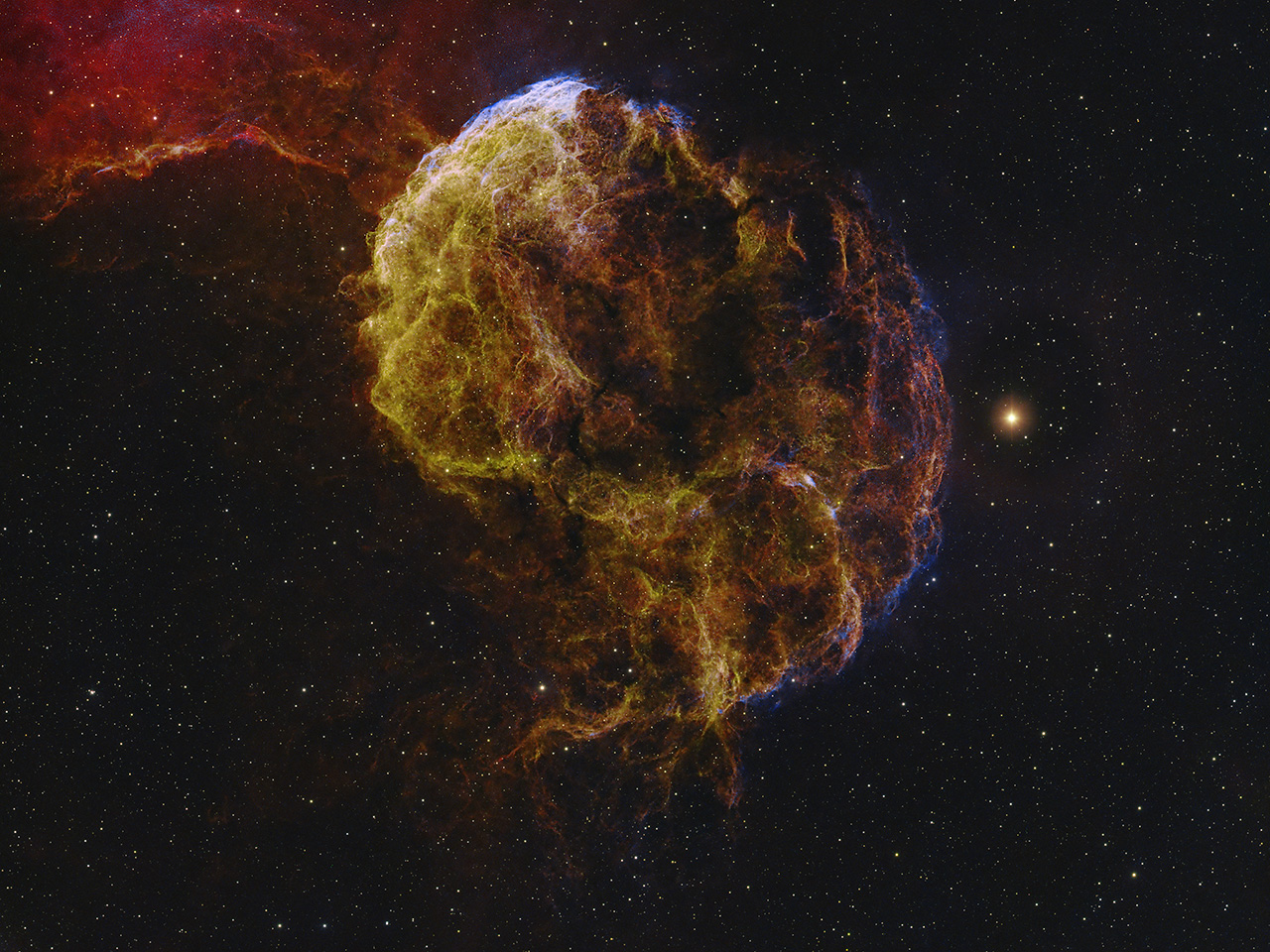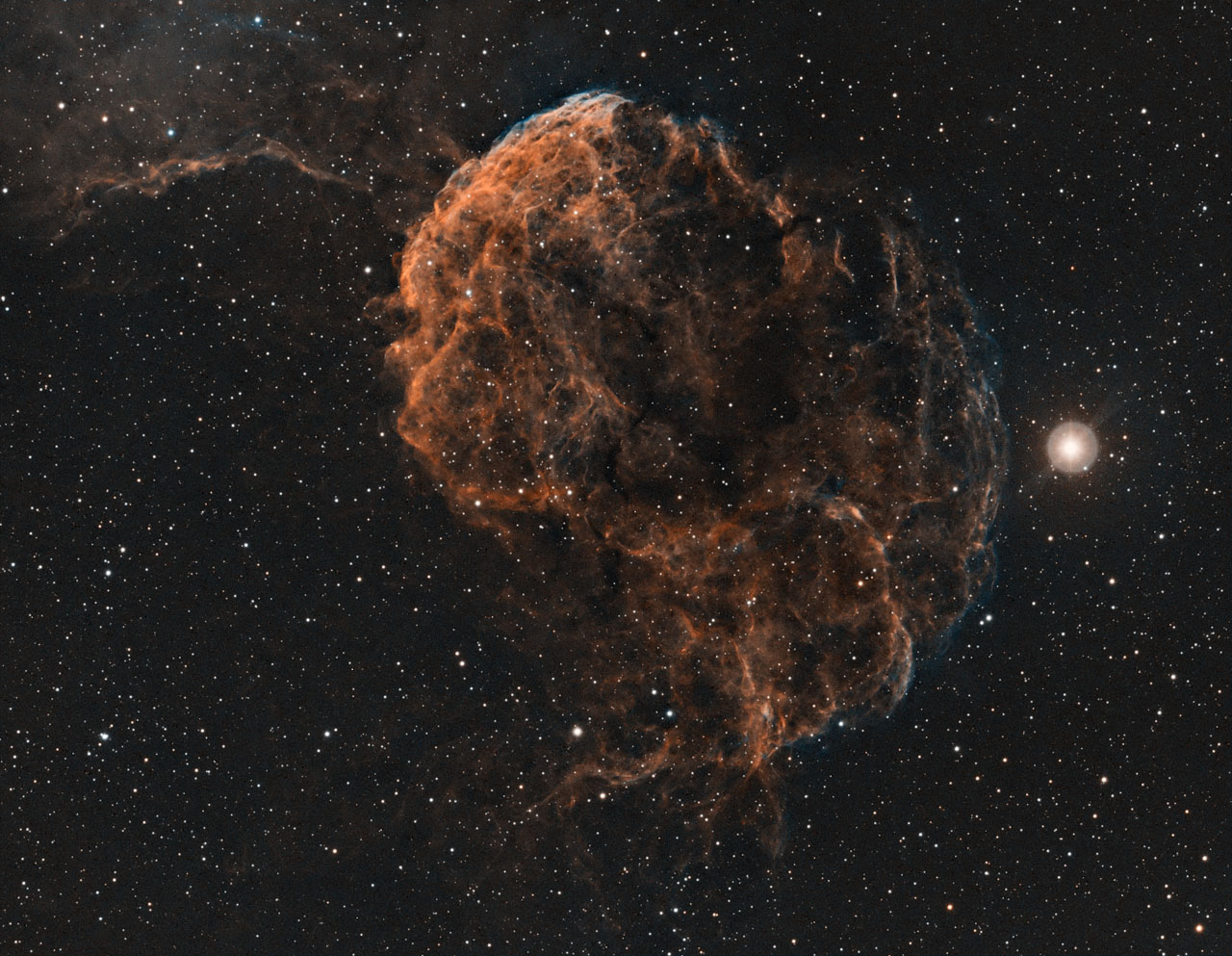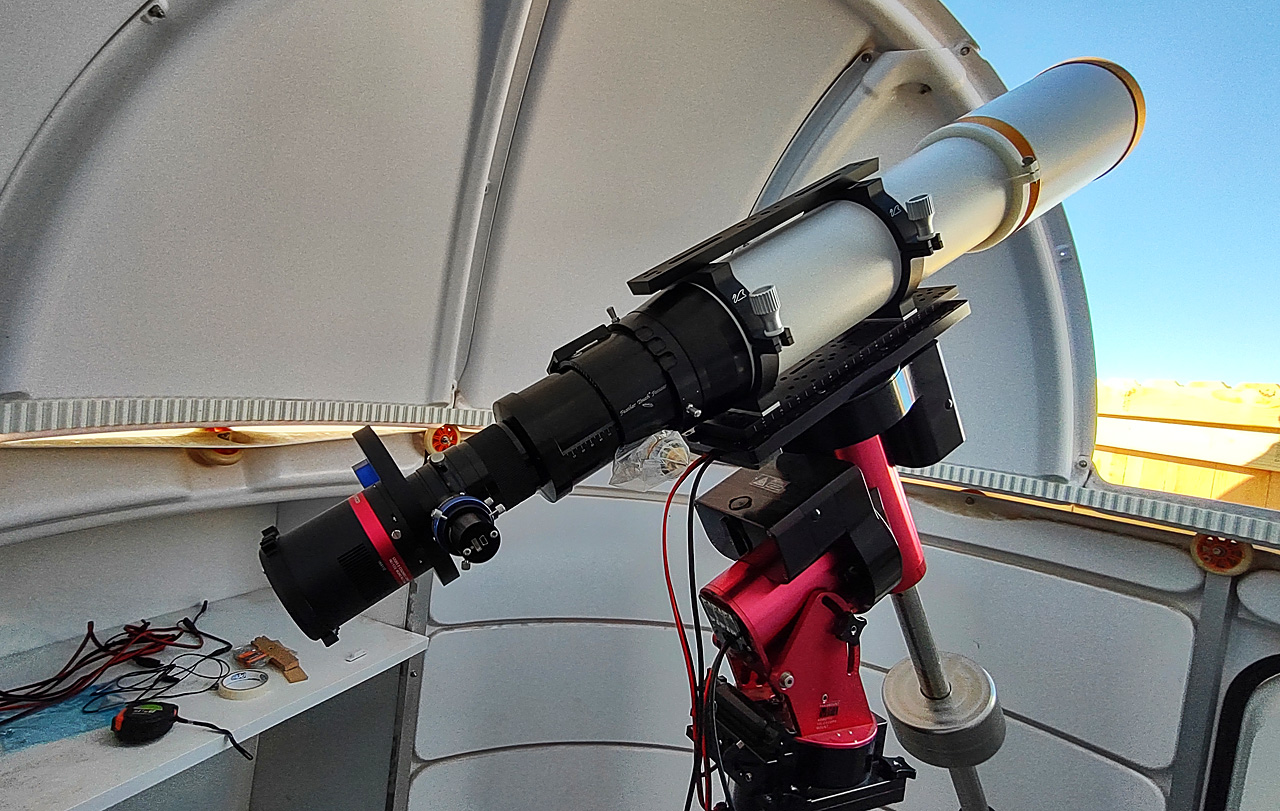No, the above image (IC443, aka the Jellyfish Nebula) is not “first light” from my new observatory – that’s still waiting on a few things, including the weather. The data for this image was captured back in 2015, using all different (and generally less good) equipment. But I’ve re-processed it using modern software (PixInsight and various add-ons to it) to demonstrate how powerful these tools have become. Below is the original image, as posted on this website back in 2015:
Aside from being cropped a little tighter, this is clearly the same image, and yet the difference is remarkable. The new version is sharper, shows more detail in the dimmer areas (especially the upper left corner), and largely repairs the “defective” bright star on the right, which had a bright halo in the earlier version, caused by reflections from the filters.
I would say that the most important difference is the use of Russel Croman’s AI-based sharpening and noise reduction tools, which are just remarkable. But almost as important is a processing technique that separates the stars from the rest of the image, allowing you to process these two elements of the image in totally different ways, then re-combine them to produce the final image. This technique is helped by Croman’s tool to separate the stars, but was possible to do with earlier tools. I chose to make the stars relatively dim, but this is an arbitrary choice. Except for the very bright, yellow star on the right there is very little color in the stars. This is because I used only narrowband filters, which generally do not yield a lot of star color. People who like colorful stars usually capture RGB data and use it just for the stars.
PixInsight is not perfect, although it’s getting better all the time. It can be very difficult to learn, and the power provided by add-on tools from a variety of software engineers means that there can be a lot of inconsistency in how things work (and how well they work). I believe that most people still use tools like Photoshop to make tweaks to their images after using PixInsight. I used Photoshop quite a lot, and it was critical in bringing out the blue around the top and right edges of the Jellyfish.
I could spend the next year re-processing images I captured earlier, but the equipment I have now, and the location of my new observatory should improve image quality as much as the new software tools, so I’m excited to get started. I did put the mount and telescope in the observatory (just missing some accessories) to make sure everything would fit properly:
Hopefully, this will be up and running soon. Right at the moment, there is snow on the ground (and the dome), which makes it difficult and messy to get in and out of the dome. And it’s going to be extremely cold for at least the next week. But there are things I can work on indoors, such as installing all the latest software on the observatory computer.


